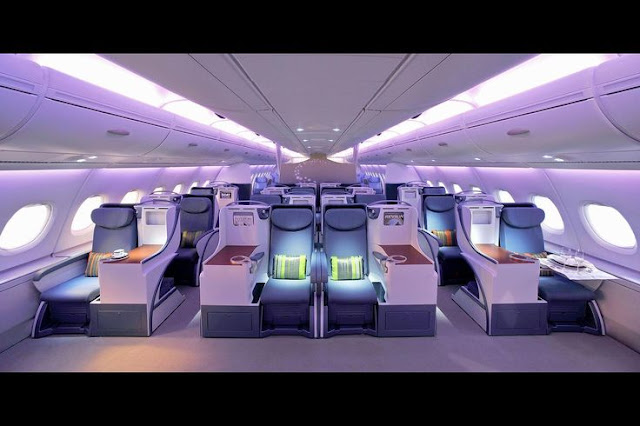Emerging Trends In The Aircraft Cabin Interior Market: Exploring Innovative Solutions For Passenger Comfort And Safety
 |
Aircraft Cabin Interior Market |
The aircraft cabin interior plays a vital role in shaping the overall passenger experience during air travel. As the aviation industry continues to evolve, new trends are emerging in the aircraft cabin interior market, focusing on innovative solutions that prioritize both passenger comfort and safety. This article delves into some of the key trends that are shaping the future of aircraft cabin interiors.
Integration of Advanced Materials:
One of the prominent trends in the Aircraft Cabin Interior Market is the incorporation of advanced materials that enhance passenger comfort and safety. From lightweight yet durable seat materials to fire-resistant cabin components, aircraft interiors are being revolutionized to provide a safer and more comfortable environment for travellers.
According to Coherent Market Insights, The global aircraft cabin interior market accounted US$ 16,113.2 Mn in terms of value and 2,415.9 Units in terms of volume in 2019.
Personalized Cabin Spaces:
Passenger personalization is gaining importance in the aircraft cabin interior market. Airlines are increasingly offering customized cabin spaces that cater to individual preferences. This includes adjustable lighting, flexible seating arrangements, and personalized entertainment systems, allowing passengers to create their own unique in-flight experience.
Enhanced In-flight Entertainment:
In-flight entertainment systems are undergoing a significant transformation. Advanced technologies such as high-definition displays, touchscreen controls, and immersive audio are being integrated into the Aircraft Cabin Interior Market, offering passengers a wide array of entertainment options to enjoy during their journey.
Smart Cabin Features:
With the advent of the Internet of Things (IoT), aircraft cabin interiors are becoming smarter and more connected. Smart sensors and devices are being installed to monitor passenger comfort, optimize cabin temperature, and even track passenger movement. This data-driven approach enables airlines to provide a personalized and seamless travel experience.
Wellness-Oriented Designs:
Passenger wellness is a growing concern in the aviation industry. Airlines are investing in wellness-oriented designs that promote relaxation and reduce travel-related stress. This includes ergonomic seating, noise-cancelling technologies, and improved cabin air quality systems to enhance passenger well-being during the flight.
Sustainable Cabin Solutions:
In response to the global focus on sustainability, the Aircraft Cabin Interior Market is embracing eco-friendly solutions. From using recycled materials to implementing energy-efficient lighting systems, sustainable practices are being integrated into cabin design and manufacturing processes, reducing the industry's environmental footprint.
The Military Aircraft Market is driven by the increasing expenditure for defense and the introduction of new advanced military aircraft into the fleet.
The Aircraft Cabin Interior Market is experiencing a wave of innovation aimed at enhancing passenger comfort and safety. With the integration of advanced materials, personalized cabin spaces, enhanced in-flight entertainment, smart cabin features, wellness-oriented designs, and sustainable solutions, the future of air travel promises a superior and more enjoyable passenger experience.
As the industry continues to evolve, the focus on innovative solutions will play a pivotal role in shaping the aircraft cabin interiors of tomorrow.
Comments
Post a Comment